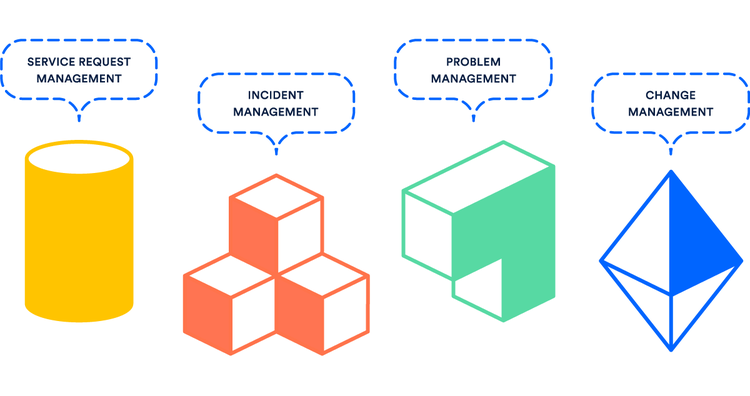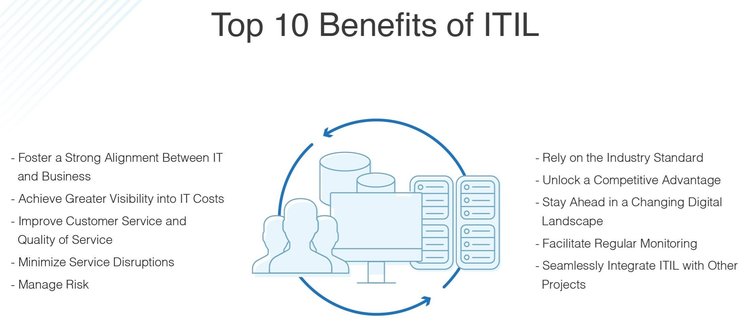Your information technology (IT) department is always going in a million different directions at once. Maybe the network is running too slowly again, multiple computers have the blue screen of death (BSOD), or a glitch in your e-commerce platform is preventing payment processing.
Who has time to deal with the bigger issues of IT service management (ITSM) in the face of daily here-and-now problems? Streamlining your IT department's operations and effective ITSM go hand in hand, however, with the implementation of Information Technology Infrastructure Library (ITIL) principles and best practices.
Service request management is a key component of the ITIL framework. We'll go over the basics of the service request process and its priorities below, so you can see how it could benefit your business.
Overview: What is a service request?
ITIL defines a service request as a "formal request from a user for something to be provided -- for example, a request for information or advice; to reset a password; or to install a workstation for a new user."
Service request management is one of four ITSM process management areas:
- Change
- Incident
- Problem
- Service request

These four process management areas are interrelated but remain distinct from each other. Image source: Author
Effective service request management improves IT department efficiency, increases customer satisfaction (CSAT), and reduces operating costs.
Service request vs. incident management: What's the difference?
Service request management is often confused with ITIL incident management. The distinction between the two is in how they are initiated:
- Service request management responds to requests for specific services such as resetting a password, setting up a new company laptop, or moving equipment from one location to another.
- Incident management deals with unexpected interruptions or degradations in the quality of an IT service such as a printer that quits working, Wi-Fi quality that is spotty, or a computer that crashes.
Service request management and incident management are both reactive; their only difference is the trigger: human versus an unplanned event. Change and problem management, in contrast, are proactive.
How the service request management process works
Successful service request management uses a four-step process that allows employees across your company to access the IT resources they need to remain productive.
Larger businesses that generate multiple daily service requests should use IT help desk software to separate this process from incident, problem, and change management.
1. Service request submitted
An authorized user/employee submits a request for a service from the IT service catalog. Perhaps it's to renew a software license, access a secure file directory in the company network, or ask a question about wireless network security while attending an out-of-town sales conference.
A phone call or email to submit a request is common in small or informal settings, but using help desk software is a better solution. Users submit requests through a help portal, and an electronic paper trail documents each step in the service request process.
2. Service request assessed
The IT team must first assess the request before any actions are taken to fulfill it. Is it routine enough to be completed as is or does it require a supervisor's approval? Must the business office or human resources (HR) sign off on the request?
The potential for multiple people or departments participating in the assessment step highlights the need for IT help desk software. Any discussions about the request, additional approvals, cost estimates, or questions for the requestor are added to the ongoing narrative in the service request ticket.
3. Service request fulfilled
Service request fulfillment encompasses two activities: planning and subsequent action. IT techs rushing around half-cocked is never efficient. Each service request needs a supply list, estimated time for completion, and the requestor's contact information so the assigned tech can complete the request satisfactorily.
Fulfilling service requests also provides your IT department with the opportunity to enhance its relations with the rest of the company.
IT departments are already seen as something of a black box by everyone else: Who knows what they do or what they're saying? The ITIL philosophy prioritizes better integration of IT departments within businesses.
4. Service request closed
The importance of post-service request fulfilment activities is often underestimated. After all, once a service request is complete, what else is there to do? This step provides important information, however, about the internal and external performance of your IT department.
The electronic record maintained in IT help desk software provides key data such as the overall mean time to resolve (MTTR) tickets and each individual tech's MTTR.
Ticket narratives also contribute to workflow analysis to improve the service request process. Every closed ticket should include the service requestor completing a CSAT survey for additional insights.
What are the priorities of service request management?
The goal of each individual service request is the same: to provide high quality customer service and results. Overarching service request management priorities include enhanced customer relations, streamlined service activities, and the application of ITIL principles.
Priority #1: Offer customer-centric processes
Almost everyone's had the experience of dealing with IT techs who make you feel like it's their world and they're just letting you live in it. It's no secret: Any tension-filled or adversarial customer service relationship creates multiple negative consequences.
Creating transparent service request processes works to everyone's benefit. Users requesting services know what to expect, and some IT help desk software will let them track the progress of their service tickets. IT techs also have a clear process to follow that standardizes workflow to make it more efficient.
Priority #2: Provide a service catalog
Ever found yourself playing 20 questions with an IT tech to figure out exactly what you need and/or what they can do to help you? The process is frustrating and time consuming for everyone.
A comprehensive online service catalog, based on the history of previous service requests and ITIL issue management, will help prevent this problem.
Each IT service catalog entry should include:
- Service title: The unambiguous name of the service and a brief description.
- Service availability: The days and hours during which the service can be fulfilled.
- Service owner: The person within the organization responsible for paying for the service.
- Service representative: The designated IT agent to coordinate and/or perform service fulfillment.
- Service criticality: The degree of relative importance assigned by the business for performing the service.
Before submitting a request, users can see which IT services are and aren't available, choose the specific one needed, and have a greater understanding of the process to fulfill it.
Priority #3: Create a knowledge base
An online knowledge base, whose initial entries are based on the history of prior service requests and ITIL incident categories, is another component of effective service request management.
Its entries cover the gamut of often-asked IT questions: the steps to change a password, how to access network files and applications, or the process to convert a Google Docs file to MS Word.
A knowledge base frees up IT techs by providing users with a place they can look first for answers to their questions. IT help desk agents can send relevant knowledge base links to users who didn't think to search there.
A knowledge base also provides standardized information and processes as opposed to either of those being dependent on the particular tech a user contacts.
Priority #4: Implement ITIL principles
ITIL emerged in the 1980s as an ad-hoc collection of IT best practices and checklists. It has gone through several iterations since then and is now more concerned with the alignment of IT practices with a business's overarching needs and goals rather than individual ITIL incidents.
ITIL Version 4 (V4), released in 2019, is built around the service value system (SVS) concept: how the synergy between an organization's activities and components create value.

ITIL seeks to better integrate all business processes to achieve competitive advantages. Image source: Author
ITIL processes are not focused on any specific software or hardware; instead, they aid collaboration between employees within a business to reach its goals.
Reap the rewards of service request management
ITIL service request management creates multiple benefits: more efficient IT services and activities, increased CSAT scores, and lower operating costs. The sooner you implement it within your IT department, the sooner you'll be saving time and money.
Our Small Business Expert
We're firm believers in the Golden Rule, which is why editorial opinions are ours alone and have not been previously reviewed, approved, or endorsed by included advertisers. The Ascent, a Motley Fool service, does not cover all offers on the market. The Ascent has a dedicated team of editors and analysts focused on personal finance, and they follow the same set of publishing standards and editorial integrity while maintaining professional separation from the analysts and editors on other Motley Fool brands.